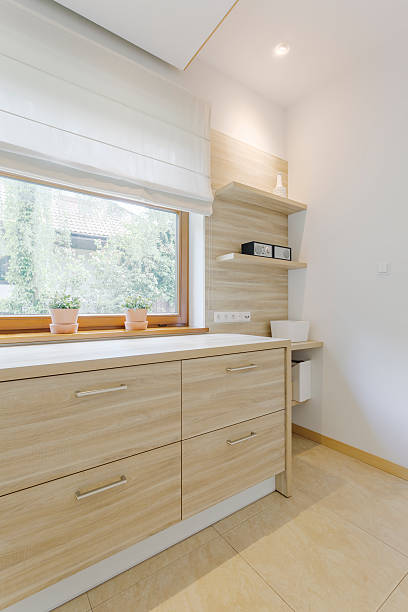Quality Indicators in Ready-to-Assemble Storage Furniture
Ready-to-assemble storage furniture has transformed how people approach home organization and interior design. These flat-packed solutions offer flexibility, affordability, and convenience for homeowners and renters alike. Understanding what distinguishes well-made pieces from inferior options helps consumers make informed purchasing decisions that balance cost with long-term durability and functionality.

Ready-to-assemble storage furniture represents a practical solution for modern living spaces, combining affordability with functional design. These products arrive in compact packaging and require assembly by the purchaser, making them accessible to a wide range of consumers seeking organized storage solutions.
What Are RTA Cabinets and How Do They Work
Ready-to-assemble cabinets arrive as flat-packed components with all necessary hardware and detailed assembly instructions. The manufacturing process involves precision cutting of panels, pre-drilling connection points, and packaging components in a logical sequence. Users connect panels using cam locks, dowels, screws, or similar fastening systems. The modular nature allows manufacturers to reduce shipping costs and storage space requirements while giving consumers flexibility in timing and placement. Most designs incorporate engineered wood products like particleboard, MDF, or plywood with various finish options including laminate, veneer, or melamine coatings.
What Are the Benefits of Choosing RTA Cabinets for Home Storage
Ready-to-assemble options provide several advantages over traditional furniture. Cost savings typically range from 30 to 60 percent compared to pre-assembled equivalents due to reduced labor and shipping expenses. The compact packaging makes transportation easier, particularly for apartment dwellers or those without large vehicles. Assembly timing flexibility allows buyers to work at their own pace without coordinating delivery schedules. Many systems offer modular expansion capabilities, letting homeowners add components as needs change. The assembly process itself provides familiarity with the product’s construction, potentially simplifying future repairs or modifications. Environmental considerations also favor flat-pack designs, as efficient packaging reduces transportation fuel consumption and carbon footprint.
What Key Features Should You Look for in Quality RTA Storage
Material composition serves as the primary quality indicator. Solid wood or high-grade plywood construction offers superior durability compared to particleboard, though cost increases accordingly. Panel thickness matters significantly—18mm or thicker panels provide better structural integrity and longevity than thinner alternatives. Edge banding quality prevents moisture infiltration and delamination; look for thick, well-adhered edge treatments. Hardware quality directly impacts assembly ease and long-term stability. Metal cam locks and reinforced connection points outlast plastic alternatives. Drawer systems with metal glides and soft-close mechanisms indicate higher manufacturing standards. Finish quality affects both appearance and durability—multi-layer coatings resist scratches and moisture better than single-layer treatments. Clear, detailed instructions with numbered parts and quality control measures suggest manufacturer attention to customer experience.
How Do RTA Cabinets Differ from Pre-Assembled Options
The fundamental distinction lies in the assembly location and timing. Pre-assembled furniture arrives fully constructed, requiring only placement in the desired location. This eliminates assembly time and potential construction errors but increases shipping costs and delivery complexity. Ready-to-assemble products transfer labor responsibility to the purchaser, creating cost savings but requiring time investment and basic tool access. Structural differences sometimes emerge in connection methods—factory-assembled pieces may use techniques unavailable to home assemblers, such as certain adhesives or specialized joinery. However, well-designed ready-to-assemble systems can match or exceed pre-assembled quality when properly constructed. Size limitations differ as well; pre-assembled furniture faces shipping dimension constraints that ready-to-assemble products avoid through flat-packing. Return and exchange processes typically prove simpler with unassembled products due to packaging size.
What Are the Installation Steps for RTA Storage Solutions
Successful assembly begins with preparation. Clear adequate workspace, verify all components against the parts list, and gather necessary tools before starting. Most projects require a screwdriver, hammer, and measuring tape at minimum. Organize hardware by type and keep instruction manuals accessible. Follow the prescribed sequence carefully—manufacturers design assembly order to maximize efficiency and structural integrity. Begin with the cabinet box or frame structure, ensuring all connections are tight but not over-tightened, which can strip threads or crack panels. Install shelves and internal components before attaching doors or drawer fronts. Use a level frequently during construction to prevent alignment issues. Door and drawer adjustments typically occur last, allowing fine-tuning of gaps and alignment. Many designs incorporate adjustable hinges and leveling feet for final positioning. Allow adequate time without rushing—most storage cabinets require one to three hours depending on complexity and experience level.
Conclusion
Ready-to-assemble storage furniture offers practical benefits for diverse living situations when quality indicators receive proper attention. Material selection, hardware quality, and construction techniques separate durable solutions from temporary fixes. Understanding the assembly process and recognizing superior design features enables consumers to select products that provide years of reliable service while maintaining budget consciousness. The combination of cost efficiency, flexibility, and improving manufacturing standards continues to make these products relevant for modern storage needs.




